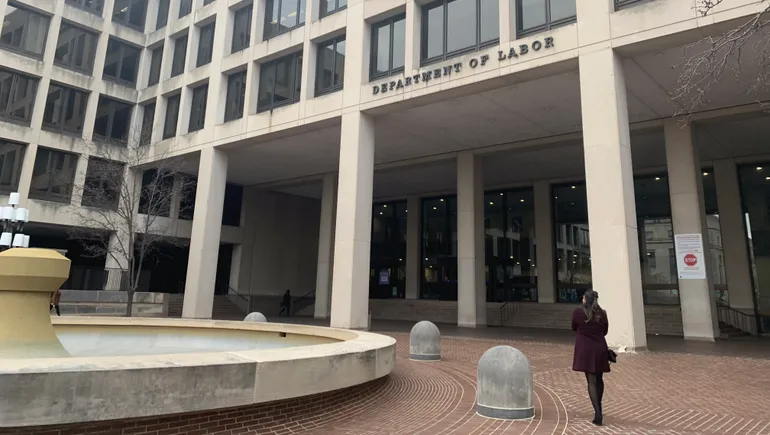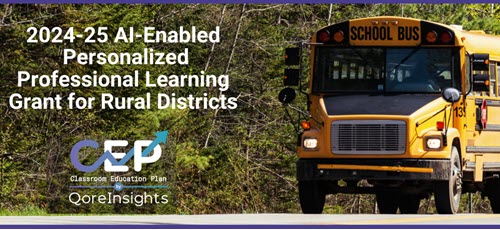When GPT-3 burst on the education scene, it caused a flood of reactions, ranging from gleeful to apocalyptic. But more than that, it unlocked money. In 2023, generative AI claimed businesses in the U.S. and Canada claimed almost 45 percent of all private equity-backed investments, by one estimate, with an eye-popping value of $2.18 billion when much of the rest of the deals in that world were declining. Even so, some investor notes issued caution about whether the flow of dollars was a “a gold rush.” And they had examples they could have called to mind, such as the metaverse, a high-tech concept for a virtual world that promised to revolutionize education before calming expectations.
Much of the initial reaction around AI focused on its ability to spit out prose on command, which threatened traditional writing instruction. But the tools were also targeted at math teaching.
Yet so far these tools have not really affected K-12 math classrooms.
A survey from the nonpartisan research organization RAND, for instance, using a nationally representative sample of teachers, noted that only 18 percent of K-12 teachers were using AI in the classroom as of fall 2023, with an additional 15 percent having tried it out. Most of those teachers taught English or social studies, where the applications of chatbots are more obvious.
These tools have not penetrated math classrooms to the degree that their marketing might suggest, says Dan Meyer, vice president of user growth for Amplify and the producer of Mathworlds, a popular math learning newsletter. Meyer speculates that may be because they use text-based interfaces. In math classes before digital technology, he says, it was actually rare to write out how you think about a problem at length. Instead, math classes involve sketching a lot of graphs and shorthand.
Further, when Meyer talks with math teachers who are using AI, he says they seem to be using the tools to write emails to parents or to generate the first draft of a quiz. It’s not “transformative usage,” Meyer says.
When advertising for AI is at an all-time high, it’s often assumed that chatbots will be transformational to education. But while chatbots have upended writing instruction, it’s unclear whether they really double as mathbots. So now that companies are investing in them, what might they mean for math education?
Being Realistic
Tech evangelists praise the promise of these chatbots to improve education by allowing for students to have personal instruction. For instance, Sal Khan, founder of Khan Academy — which built the AI tool Khanmigo — argues that the tools represent the “probably the biggest positive transformation that education has ever seen.” Artificial intelligence will supply every student on the planet a talented personal tutor and every teacher an amazing teaching assistant, Khan has said.
At the moment, though, precisely what that looks like differs.
Take AI tutoring service Thetawise, which estimates that it is used by nearly 143,000 students. “Conquer your math class with Thetawise, the most accurate AI tutor,” the company website advertises.
James Grom, the founder and CEO of Thetawise, told EdSurge that the company focuses on college students on a subscription model. The technology isn’t necessarily there to serve young kids, Grom says. Younger students are stickier because the tools really have to address their motivation more, Grom says. Younger students also tend to anthropomorphize the bots, he adds. So instead, the company has chosen to focus on college math, where the cost of tutoring is higher and there are fewer options.
How students are using these tools is really important, Grom says. If you were tutoring a student through a computer and could only communicate through the keyboard, there is so much information you would be missing, like the context of facial expressions and how long it takes the student to move from one part of the question to the next. And that’s precisely how these bots interact.
However, ultimately, these tools will meet the proficiency of human tutors, especially with the proliferation of tablets, Grom argues. That’s because, he says, “real-time tutoring” — such as GPT-4 Omni, which was demoed by Sal Khan and his son earlier this year — allows for interaction via voice, which makes people more likely to engage with tools in a tutoring manner, rather than only through typing.
The advertising for Grom’s own product stresses the ability to draw, speak or paste images of math problems into the bot. And he says that more than 40 percent of Thetawise users use “tutoring mode,” the version designed not to give students the answer.
For now, outside of schools, the products aimed directly at students are there and will continue to be used, Grom says. For products that are designed for use in schools, it’s more complicated, he says. There are a lot of social problems, including how AI bots affect student motivation, or whether they grow or shrink disparities within classrooms.
There have also been concerns about rampant cheating with products of both kinds.
Flawed Theory of Learning?
But some question whether these tools really could be such excellent math tutors.
Chatbots are best understood as an evolution in personal learning, Meyer, of Mathworlds, says. That means they are in line with students watching videos on a laptop by themselves, he adds. But students have lots of math knowledge, Meyer argues, since even those who are behind in class will understand patterns in the world and have some informal language to describe complex phenomena. The difference is in the ability to unlock that knowledge: Human teachers can draw that out of students and use it, Meyer says. Chatbots cannot do that unless the student types in an enormous amount of information.
Others share in the skepticism.
In math, people can be hesitant to get help, says Nick Hershman, a teacher on special assignment who’s based in Beaverton, near the Portland metro area in Oregon. A good teacher — or tutor — relies on personal and emotional connection, he argues. Overcoming initial resistance from a student can require an instructor to build a relationship with the child. But when interacting with a chatbot, the little moments that build trust between tutor and student can feel inauthentic, he says. “No inhuman chatbot is going to help me feel good,” Hershman says.
Meyer suggests that these tools’ lack of that human touch may explain why they have been slow to overtake math classrooms.
For Meyer, that lag identifies part of the problem with these tools. Human teachers will be able to look at a sketch, ask for a couple words about a part of it, and then respond, using the context of the classroom, Meyer says. For a chatbot to have comparable knowledge would require a student to type pages and pages to try to communicate in words what they communicate so effectively and simply with multimedia, Meyer adds. Plus, even then, the human teacher could have incorporated facial cues from the student as clues to their understanding, which would have eluded a chatbot.
Does It Add Up?
So what does this matter?
The biggest consequence of investing time, attention and capital into a false trail that doesn’t pay off on its claim of being transformational is that it will cost years of support for students and teachers who need it, Meyer says.
Post-pandemic, students are already struggling with lost learning, and teachers feel like they are drowning, he says.
Instead of investing in high-dose tutoring — which has shown some promise in helping students — or in lifting teacher salaries and shrinking class sizes, the education system is counting on generative AI to address resource challenges, he says.
But it’s shown no signs so far of being able to meet those needs, and schools are losing time, and people, he adds.
It’s not that the promise of these tools is lost on skeptics.
“You balance skepticism and some version of hope that maybe this time it’s different. You know, maybe this tool is different,” says Hershman, the teacher from Beaverton. “Because we all wish we had magical tools to make [teaching] easier.”
But the broken promises of earlier tech to revolutionize education weigh heavily. Plus, with dwindling funds thanks to enrollment declines and the sunsetting of federal relief dollars, these schools also have to be more circumspect about purchases. The tech enthusiasm can feel increasingly hollow, more like a sales pitch than a “disruption.”
So to rouse Hershman from his skepticism, he says he’d need to believe that this technology is meaningfully improving outcomes for students, especially those from marginalized backgrounds. But his doubt is reinforced by the realities of limited resources and training opportunities that districts face. There are always stories of any educational resource helping individual students, often the most motivated and easiest to support, Hershman says. But it doesn’t feel like enough to overcome the current obstacles in front of schools.




















Discussion about this post